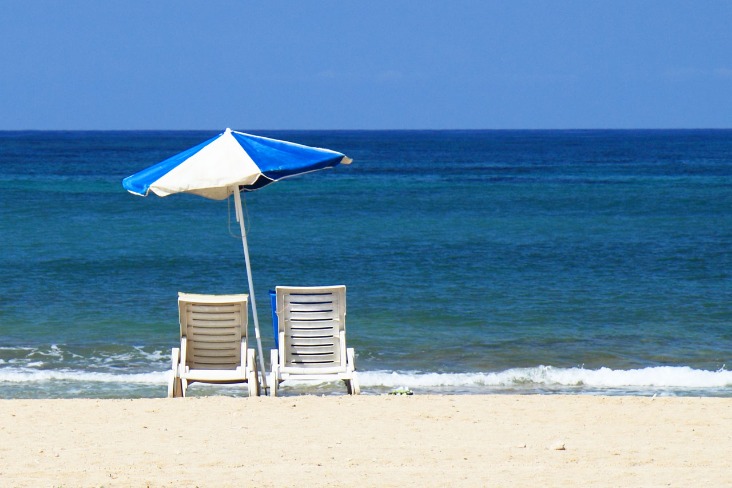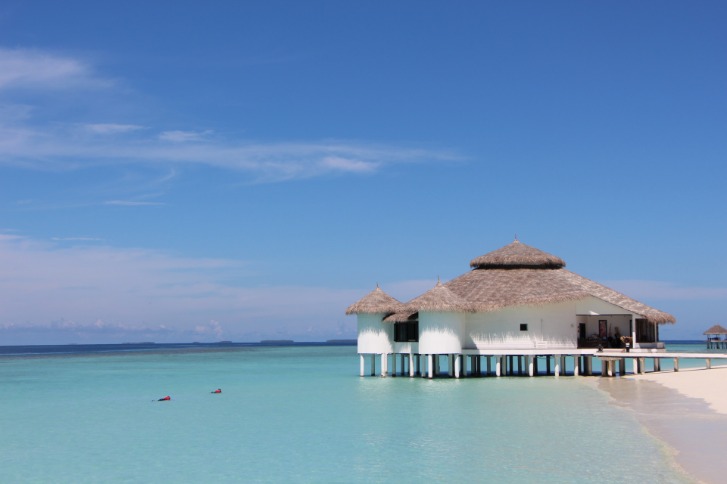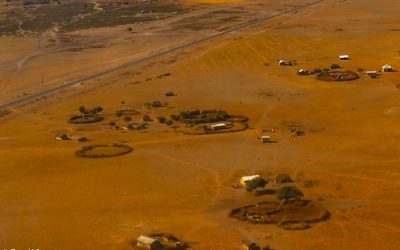Overview of Beaches in Tanzania
Tanzania is renowned for its stunning coastline and pristine beaches that attract travelers from around the world. With its clear turquoise waters, white sandy shores, and diverse marine life, Tanzania offers an exceptional beach experience. From the popular beaches of Zanzibar to the untouched sands along the mainland coast, there are numerous options for relaxation, adventure, and exploration. These beaches not only provide breathtaking scenery but also serve as gateways to vibrant coral reefs and marine ecosystems, making Tanzania a top destination for beach lovers.
Geographical Distribution
Tanzania is renowned for its stunning coastline along the Indian Ocean, offering a variety of beautiful beaches that attract tourists from around the world. The geographical distribution of these beaches spans several key regions, each featuring unique landscapes and environments suitable for relaxation and water-based activities.
- Eastern Coast: The most famous beaches are located along the eastern coastline, including the beaches of Zanzibar, Pemba Island, and the Dar es Salaam region. These beaches are known for their white sands, clear turquoise waters, and vibrant marine life.
- Zanzibar Archipelago: Comprising islands such as Unguja and Pemba, Zanzibar boasts some of the most picturesque beaches, like Nungwi and Kendwa, which are celebrated for their pristine sands and excellent snorkeling and diving opportunities.
- North Coast: Areas like Pangani and Tanga feature less crowded beaches with unique coastal scenery, ideal for eco-tourism and exploring the local culture.
- Southern Coast and Islands: The southern regions, including Mafia Island, offer secluded beaches and unspoiled natural environments perfect for diving and exploring marine biodiversity.
- Western Coast: Although less developed, the western coast along Lake Tanganyika offers a different beach experience, characterized by fresh water beaches and unique aquatic ecosystems.
Climate and Seasonal Variations
Tanzania is renowned for its stunning beaches along its extensive coastline and island regions, offering a variety of pristine sands and turquoise waters. The beaches in Tanzania are characterized by clear seas, vibrant marine life, and scenic landscapes, making them popular destinations for travelers seeking relaxation and adventure alike.
The climate in Tanzania’s coastal areas is tropical, with warm temperatures prevailing throughout the year. The region experiences distinct dry and rainy seasons, which influence the best times to visit. The dry season, from June to October, features sunny weather and lower humidity, ideal for beach activities and water sports. Conversely, the rainy seasons, from November to May, bring heavier rains and higher humidity, which can impact travel plans but also enrich the lush coastal environment. Seasonal variations also affect marine conditions, with calmer seas during the dry months favored for snorkeling and diving.
Popular Beach Destinations in Tanzania
Tanzania boasts some of the most stunning and pristine beaches in Africa, making it a perfect destination for travelers seeking sun, sand, and sea. With its turquoise waters, white sandy shores, and vibrant marine life, Tanzania’s beaches offer a idyllic escape for relaxation and adventure alike. From tranquil coves to lively coastal hotspots, these destinations showcase the natural beauty and diverse attractions of the Tanzanian coastline.
Pemba Island
Pemba Island, one of Tanzania’s hidden gems, is renowned for its pristine beaches and crystal-clear waters. This tranquil island offers an idyllic escape for those seeking relaxation and natural beauty. The beaches here are characterized by soft white sands, vibrant coral reefs, and lush green surroundings, making it an ideal destination for swimming, snorkeling, and diving. Visitors can enjoy the peaceful atmosphere away from busy tourist spots, immersing themselves in the island’s rich marine life and untouched landscapes. Pemba Island is truly a paradise for beach lovers looking for an authentic and serene Tanzanian coastal experience.

Dar es Salaam Coast
Tanzania boasts some of the most stunning beach destinations along its Dar es Salaam coast, attracting travelers from around the world. These beaches are renowned for their pristine white sands, crystal-clear waters, and vibrant marine life, making them perfect for relaxation and adventure alike. Popular spots such as Coco Beach offer lively shoreline experiences with restaurants and bars, while Kigamboni Beach provides a quieter, more secluded environment ideal for unwinding. Bongwe Beach and Mbudya Island are also sought-after destinations that showcase Tanzania’s natural beauty and rich coastal culture. Whether seeking water sports, sunbathing, or exploring coral reefs, the beaches in Tanzania’s Dar es Salaam coast provide a diverse range of options for visitors.
Activities and Attractions on Tanzanian Beaches
Tanzanian beaches are renowned for their stunning beauty and diverse activities, offering visitors a perfect blend of relaxation and adventure. From pristine white sands to crystal-clear waters, these beaches provide a variety of attractions such as snorkeling, diving, and boat safaris. Whether you’re seeking tranquil seaside moments or exciting water sports, Tanzania’s coastline promises memorable experiences amidst breathtaking natural scenery.
Snorkeling and Diving
Tanzania boasts some of the most stunning beaches in Africa, offering a perfect blend of relaxation and adventure through activities like snorkeling and diving. Visitors can explore vibrant marine life, coral reefs, and pristine sandy shores that make the beaches truly spectacular.
- Snorkeling among coral reefs teeming with colorful fish and sea turtles.
- Diving into clear waters to discover diverse marine ecosystems and vibrant marine species.
- Exploring the historic and lively beaches of Zanzibar, such as Nungwi and Kendwa.
- Relaxing on the soft white sands of Paje Beach while enjoying ocean views.
- Participating in boat tours that take you to secluded islands and hidden coves.
Beyond water activities, beaches in Tanzania often feature lively local markets, cultural experiences, and breathtaking sunsets, making them ideal destinations for both adventure seekers and leisure travelers alike.
Water Sports and Adventure
Tanzania’s beaches are renowned for their stunning natural beauty and offer a wide range of activities and attractions for visitors seeking adventure and relaxation. From pristine white sands to vibrant marine life, the country’s coastal destinations provide unforgettable experiences for every traveler.
- Snorkeling and Diving: Explore the colorful coral reefs teeming with tropical fish, sea turtles, and other marine creatures around Zanzibar, Pemba, and Dar es Salaam.
- Water Sports: Engage in thrilling activities such as windsurfing, kitesurfing, kayaking, and paddleboarding along the calm coastal waters.
- Deep-sea Fishing: Experience the excitement of sportfishing for marlin, tuna, and other big-game fish in the Indian Ocean.
- Beach Relaxation: Unwind on the soft sands of Nungwi, Kendwa, or Paje beaches while enjoying the scenic ocean views and warm sun.
- Island Hopping: Visit nearby islands like Prison Island or Mnemba Atoll for unique adventures and pristine beaches.
- Wildlife & Marine Tours: Combine a beach visit with marine safaris to spot dolphins, whales, and seabirds that inhabit the region.

Wildlife and Marine Exploration
Discover the stunning beaches, diverse wildlife, and vibrant marine life of Tanzania, making it a perfect destination for nature lovers and adventure seekers alike.
- Relax on pristine beaches such as Zanzibar’s Nungwi and Kendwa, known for their soft white sand and crystal-clear waters.
- Experience a thrilling safari in Serengeti National Park or Ngorongoro Crater to observe the Big Five and other unique wildlife species.
- Explore Mnemba Atoll for world-class snorkeling and scuba diving, where colorful coral reefs and abundant marine life await.
- Visit Mafia Island to enjoy whale shark swimming and explore vibrant marine ecosystems.
- Participate in boat safaris and dhow cruises along the coastline, offering breathtaking views of the ocean and nearby islands.
- Discover the Doa Doa Islands, a hidden gem for snorkeling, birdwatching, and untouched natural beauty.
- Attend cultural festivals and local markets to experience the rich traditions and hospitality of Tanzanian communities.
Beach Resorts and Accommodation
Tanzanian beaches are renowned for their pristine beauty and vibrant marine life, offering a variety of activities and attractions for visitors. Whether you’re seeking adventure or relaxation, the beaches provide something for everyone.
Snorkeling and diving are among the top activities, allowing travelers to explore the colorful coral reefs and encounter diverse underwater species. Mnemba Atoll, Kendwa Beach, and Paje Beach are popular spots for water enthusiasts. Additionally, many beaches host seasonal activities like kite surfing, windsurfing, and deep-sea fishing, making Tanzania a perfect destination for thrill-seekers.
Beyond water sports, visitors can enjoy beachcombing, sunbathing, and beach picnics in tranquil settings. For those interested in cultural experiences, some resorts offer village tours and local cuisine tasting, providing a glimpse into coastal Tanzanian life. The stunning sunsets and scenic landscapes also make for breathtaking photographic opportunities.
Beach resorts and accommodations along Tanzanian coasts range from luxurious all-inclusive resorts to charming boutique hotels and eco-lodges. Many of these accommodations offer direct access to the beaches, stylish amenities, spa services, and exceptional hospitality, ensuring a memorable stay. Popular destinations such as Zanzibar, Dar es Salaam, and Saadani are home to a variety of accommodations that cater to different budgets and preferences.
Cultural and Traditional Aspects
Language is a reflection of cultural and traditional values, shaping how communities communicate and preserve their heritage. In Tanzania, the linguistic landscape surrounding beach communities is rich and diverse, embodying the customs, beliefs, and histories of the local people. These linguistic nuances offer a window into the unique ways residents express their connection to the sea, their environment, and their cultural identity. Exploring the language used in Tanzanian beach areas reveals the deep-rooted traditions that continue to influence daily life and social interactions.
Local Fishing Communities
The fishing communities along Tanzania’s beaches are deeply rooted in rich cultural and traditional practices that have been passed down through generations. These communities often rely on age-old methods of fishing, such as using dhow boats and handlines, which are integral to their way of life. Festivals and rituals celebrating the sea play a significant role in strengthening community bonds and honoring their relationship with the ocean.
Traditional music, dance, and storytelling are vital aspects of the local culture, often performed during communal gatherings and festivals near the beach. These activities serve both as entertainment and as a means to preserve their history and folklore. Fishing communities also have unique crafts, such as weaving mats and making fishing nets, which reflect their cultural identity and resourcefulness.
Respect for the sea and their natural environment is deeply embedded in local beliefs and customs. Many communities follow customary laws that regulate fishing seasons and methods to ensure sustainable practices. This harmonious relationship with nature demonstrates their commitment to preserving their cultural heritage while maintaining their livelihood along Tanzania’s beautiful coastal beaches.
Festivals and Events
The beaches of Tanzania are not only famous for their stunning natural beauty but also for their rich cultural and traditional significance. Local communities often gather during special occasions to celebrate their heritage through music, dance, and traditional ceremonies that reflect the diverse cultures along the coast. These events showcase the unique customs of various ethnic groups, fostering a sense of unity and pride among residents and visitors alike.
Festivals and events centered around the beaches in Tanzania often coincide with important agricultural, religious, or historical dates. For example, the Mwaka Kogwa festival in Zanzibar is a lively celebration marking the Persian New Year, featuring drumming, dancing, and elaborate rituals. Visitors attending such festivals get a firsthand experience of the vibrant traditions that have been preserved over generations, enhancing their appreciation of the local culture.
Additionally, many coastal communities host boat races, coral festivals, and seafood celebrations, which highlight their relationship with the sea and traditional livelihoods. These events provide an opportunity for tourists to immerse themselves in authentic cultural experiences while enjoying the breathtaking coastal scenery. Overall, the cultural and traditional aspects of Tanzania’s beaches add depth and significance to their natural allure, making them unique destinations for cultural explorers and beach lovers alike.
Environmental and Conservation Efforts
Beach environments in Tanzania are vital ecosystems that require dedicated conservation efforts to preserve their natural beauty and biodiversity. With stunning coastlines along the Indian Ocean, these beaches attract visitors and support local communities, making sustainable practices essential. Initiatives focused on protecting marine life, reducing pollution, and promoting eco-friendly tourism play a crucial role in ensuring that Tanzania’s beaches remain pristine and thriving for generations to come.
Marine Protected Areas
Beaches in Tanzania are renowned for their natural beauty and diverse marine ecosystems, making them vital areas for environmental and conservation efforts. Marine Protected Areas (MPAs) play a crucial role in preserving the delicate balance of these ecosystems, safeguarding coral reefs, marine life, and coastal habitats from overfishing, pollution, and illegal activities. Initiatives such as the Mnazi Bay-Ruvuma Estuary Marine Park and the Dar es Salaam Marine Reserve have been established to promote sustainable use and promote the recovery of degraded habitats. These efforts not only ensure the health of marine biodiversity but also support local communities through ecotourism and sustainable fishing practices. Continued commitment to conservation in Tanzania’s coastal regions is essential for maintaining the ecological integrity and economic vitality of its beautiful beaches and marine environments.
Sustainable Tourism Initiatives
Beaches in Tanzania are renowned for their natural beauty and pristine conditions, making environmental and conservation efforts vital to preserve their allure. Various initiatives focus on protecting coastal ecosystems, such as mangrove planting projects and marine protected areas, ensuring the sustainability of marine biodiversity. Sustainable tourism initiatives are increasingly gaining momentum, encouraging eco-friendly practices among visitors and local businesses, including waste reduction, responsible snorkeling and diving, and supporting community-based tourism. These efforts aim to balance economic benefits from tourism with environmental preservation, ensuring that Tanzania’s beaches remain pristine and vibrant for future generations to enjoy.
Travel Tips and Best Time to Visit
Exploring the beautiful beaches of Tanzania offers an unforgettable experience, but knowing the right travel tips and the best time to visit can enhance your adventure. From pristine shores to warm turquoise waters, Tanzania’s coastal destinations are best enjoyed with some planning. Understanding the ideal seasons and helpful tips will ensure you make the most of your beach getaway in this stunning part of East Africa.
Weather Considerations
Exploring the beaches of Tanzania offers an unforgettable experience, but planning your visit around the ideal time is essential for the best weather and activities. The primary beach destinations, such as Zanzibar and the mainland coast, are best visited during the dry season from June to October when the weather is warm, sunny, and less humid. During these months, you can enjoy swimming, snorkeling, and sunbathing without interruption from heavy rains. The rainy season from November to April brings more humidity and occasional showers, which can disrupt outdoor activities but also results in lusher landscapes and fewer crowds. To avoid the peak tourist period and enjoy calmer beaches, consider traveling in the shoulder months of April and May. Always check local weather forecasts before your trip to ensure optimal conditions for beach activities and safeguard your travel experience against sudden weather changes.
Visa and Travel Requirements
When planning a trip to the beautiful beaches of Tanzania, it’s important to consider the best time to visit to enjoy ideal weather and avoid peak tourist crowds. The optimal time is generally from June to October when the weather is dry and sunny, perfect for relaxing on the shore or exploring marine life. The rainy season, from November to May, can cause travel disruptions and less optimal beach conditions.
Visitors should check visa requirements before departure. Citizens of many countries can obtain a visa on arrival or apply for an e-visa online prior to travel. Ensure your passport is valid for at least six months beyond your planned stay and has at least two blank pages. Additional documentation, such as proof of onward travel or hotel reservations, may be required.
Travel requirements include specific health and safety measures. It’s recommended to have vaccinations for yellow fever, hepatitis A and B, and typhoid. Malaria prophylaxis is advised since the risk exists in many parts of Tanzania, including coastal areas. Travelers should also carry sufficient funds, local currency (Tanzanian shillings), and be aware of local customs to ensure a smooth and enjoyable beach holiday experience.





0 Comments